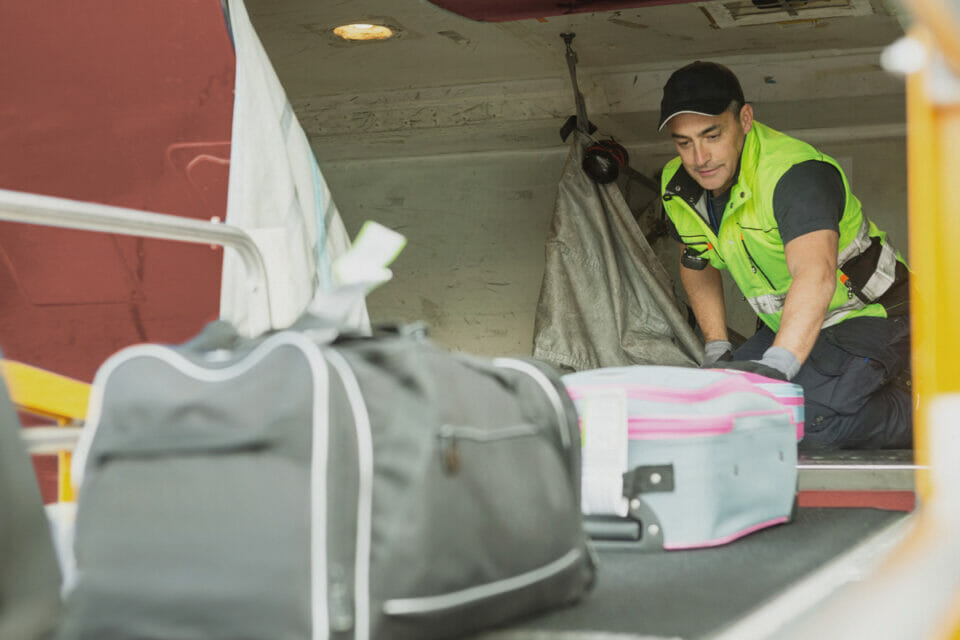
Getting Ready for Winter — What Safety Leaders Need to Know Now | Risk Matrix Episode 118
THE RISK MATRIX Cutting-edge podcast on occupational safety and risk management. Hosted by industry titans: JAMES JUNKIN, MS, CSP, MSP,…
Airports must track the right safety KPIs that assess the effectiveness of current safety procedures and identify areas for improvement.

Key performance indicators, or KPIs, can help airports measure and improve process performance and achieve meaningful business goals. KPIs can track various measures, not the least of which is health and safety.
Safety KPIs act as benchmarks to gauge how safe the workplace is for contractors and whether the airport complies with appropriate regulatory bodies. By monitoring safety KPIs, airports can identify which requirements they already meet and which processes and procedures require more attention.
This article examines 10 such metrics every airport should monitor.
This KPI measures the number of reported workplace incidents or accidents over a predetermined period. For example, management should count all the runway repair incidents for the month following the introduction of paving machinery by the contractor.
Safety teams can ascertain whether there is a connection between the rise in reported events and the new equipment by monitoring the reported incident’s KPI. Safety teams can also calculate the entire cost of any mishaps connected to the latest equipment to assess whether the machine is a wise investment for the airport.
This KPI tracks the number of incidents during a predetermined period by a standard population. To compute the Lost Time Injury Frequency Rate (LTIFR) for 1000 workers, safety teams would multiply the incidences by 100, then divide the result by the total population.
For example, if an airport records two incidents, they divide 200 (2 x 100) by the population, resulting in an LTIIR of 0.2. Therefore, an organization would have 0.2 LTIs for every 100 people.
Safety teams can influence safety and output by tracking the number of equipment breakdowns, identifying areas for improvement, and setting a realistic goal to reduce this number. Critical equipment breakdowns frequently result in a loss of activity.
Most importantly, because a significant portion of incidents is due to the equipment’s condition, this metric is a strong lead indicator that will significantly contribute to the decrease in accidents.
This metric measures the airport’s corrective actions to address particular health and safety risks.
For example, an airport reducing runway work by 20% during a dangerously cold winter to reduce the risk of injury is a corrective action. Management can learn more about the airport’s steps to address specific problems and associated costs by identifying and disclosing the specifics of those corrective actions.
This KPI calculates how frequently and how many hours the business spends on contractor training. This KPI can also calculate the overall expense of educating contractors about health and safety regulations.
Near misses present a chance to improve organizational learning and the effectiveness of safety measures without the unfortunate repercussions of a genuine accident.
However, safety teams should treat them like they would an actual incident report for training purposes. Investigations into near misses that result in improved preventative measures are valuable learning opportunities.
As the name suggests, this metric counts the number of days without a workplace accident. While it is a helpful metric, and management should celebrate a long string of accident-free workdays, the number can be misleading and create a false sense of security.
More specifically, although this number initially looks to be increasing, incidents may still have happened. Workers might decide against reporting incidents in a misguided attempt to help improve workplace safety numbers.
Airports can monitor how many overtime hours each contractor puts in using this KPI. It helps them understand how overtime hours affect worker productivity and may adversely impact workplace health and safety.
For example, management might restrict the amount of overtime permitted in a construction-heavy setting to lessen the chance of weariness, possibly diminishing workplace accidents and lowering the risk of injury.
The ART equals the average time it takes to resolve a safety or health risk. Safety teams can gauge the effectiveness of the health and safety coordinator’s efforts and the precision and consistency of incident reports by looking at how much time passes between the commencement and resolution of an incident.
For instance, the airport might assess the ART if the contractor has a working accident to ascertain the effectiveness of its accident response team. This data might assist in improving incident reporting and the airport’s response.
This number represents the financial investment in health and safety risk reduction on the airport’s property. These expenses will cover training, inspections, and audits to provide hospitable and safe working environments.
A safety program’s foundation is safety KPIs, and airports can leverage these metrics to benchmark performance and collect the data necessary to minimize contractor accidents.
KPIs provide safety teams with unbiased and unaltered information demonstrating the effectiveness of current safety policies and procedures, which help direct future health and safety decisions. By choosing the Veriforce contractor management solution, airports can work towards exceeding their desired KPIs, and meeting the highest standards for safety and compliance.


THE RISK MATRIX Cutting-edge podcast on occupational safety and risk management. Hosted by industry titans: JAMES JUNKIN, MS, CSP, MSP,…
We’ll send you practical and insightful supply chain risk management info that can benefit your business. Plus, important company updates that keep you in the loop.
